13 Days 12 Nights
Daily Tour
50 people
___
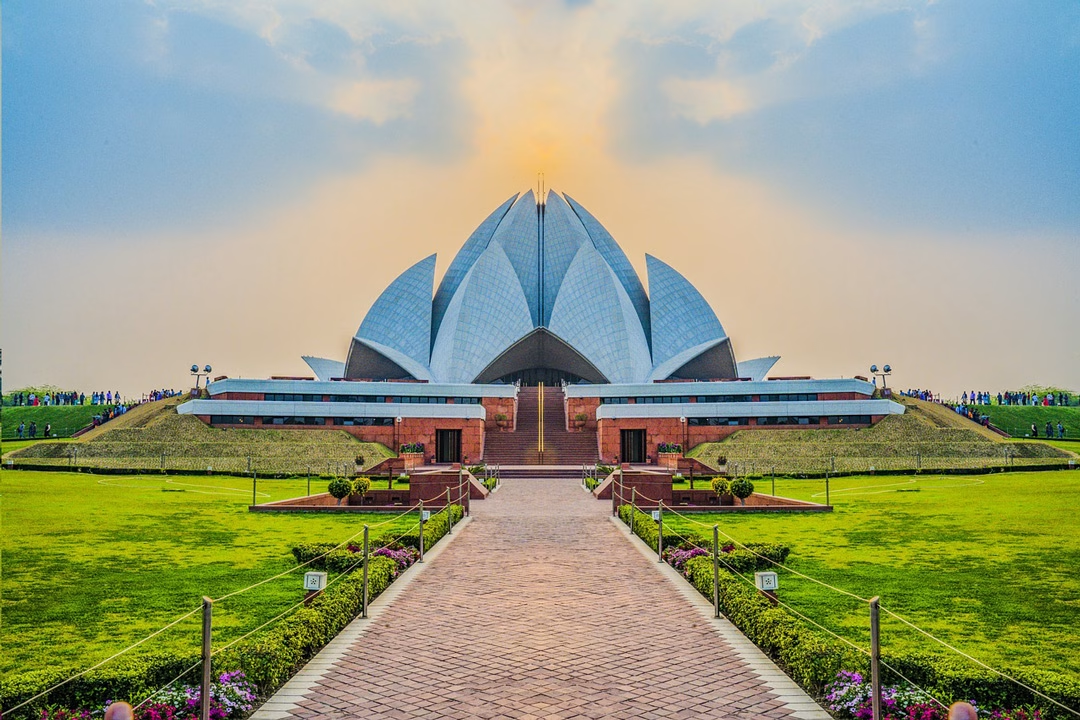
Dist: 550 km | Time: 10-14 hours
You will travel from Delhi to Manali by cab or Volvo bus. Then, you will reach Manali the following day after driving for 10 to 14 hours overnight on the Kiratpur-Manali Highway.
Meals: Nil
Night: Overnight Journey by Volvo/Cab
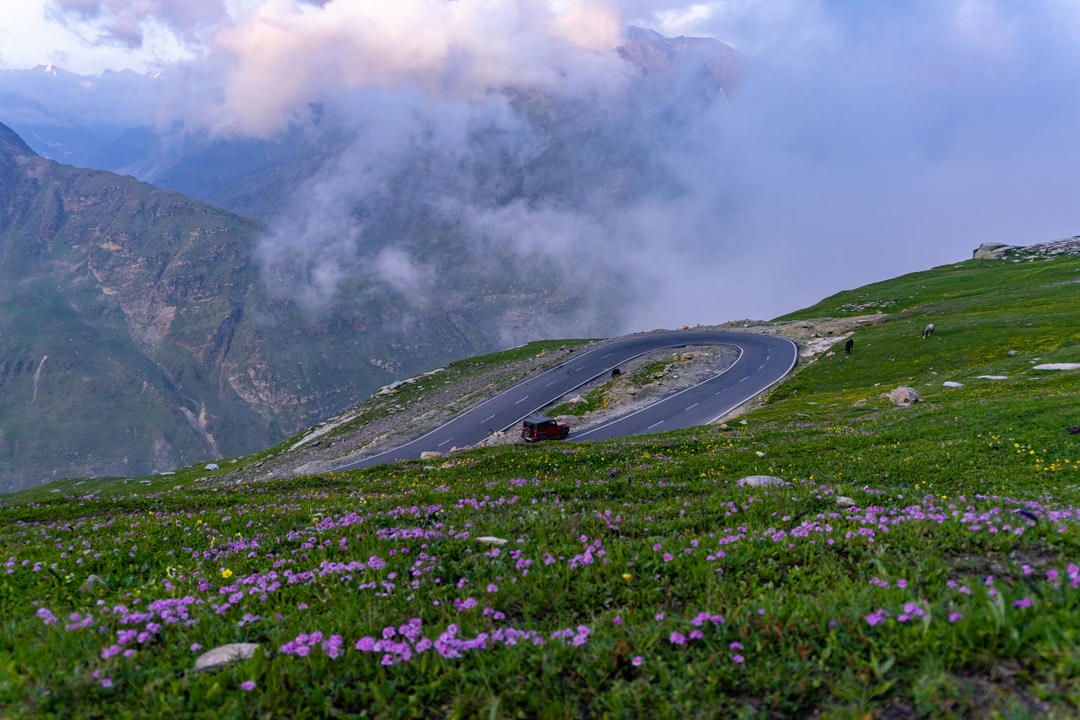
Dist: 95 km | Time: 03-04 hours
After arriving at Manali, you will leave for Jispa, where you will check into the hotel and gear up to explore the beautiful valley. Perched on the banks of the river Bhag, it offers stunning views surrounded by mountains.
Meals: Dinner
Night: Stay at the hotel/camp in Jispa
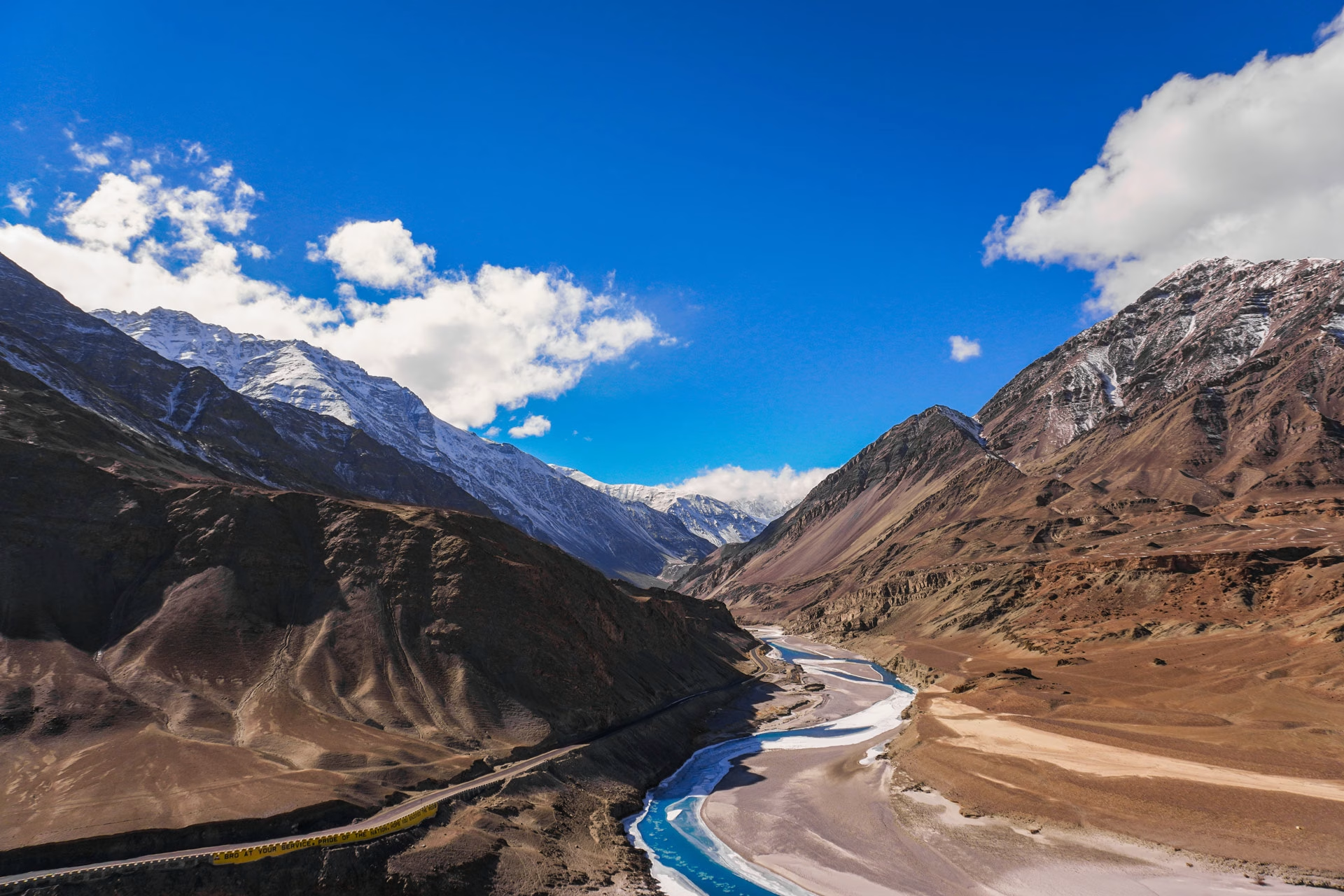
Dist: 90 km | Time: 04-05 hours
Today, you will start your expedition from Jispa to Purne, crossing a high altitude pass of Shinkula at a staggering 16580 ft. You will also witness one of the most beautiful mountains, Gumbok Rangan, standing there and welcoming you.
Meals: Breakfast and Dinner
Night: Stay at the homestay/camps in Purne
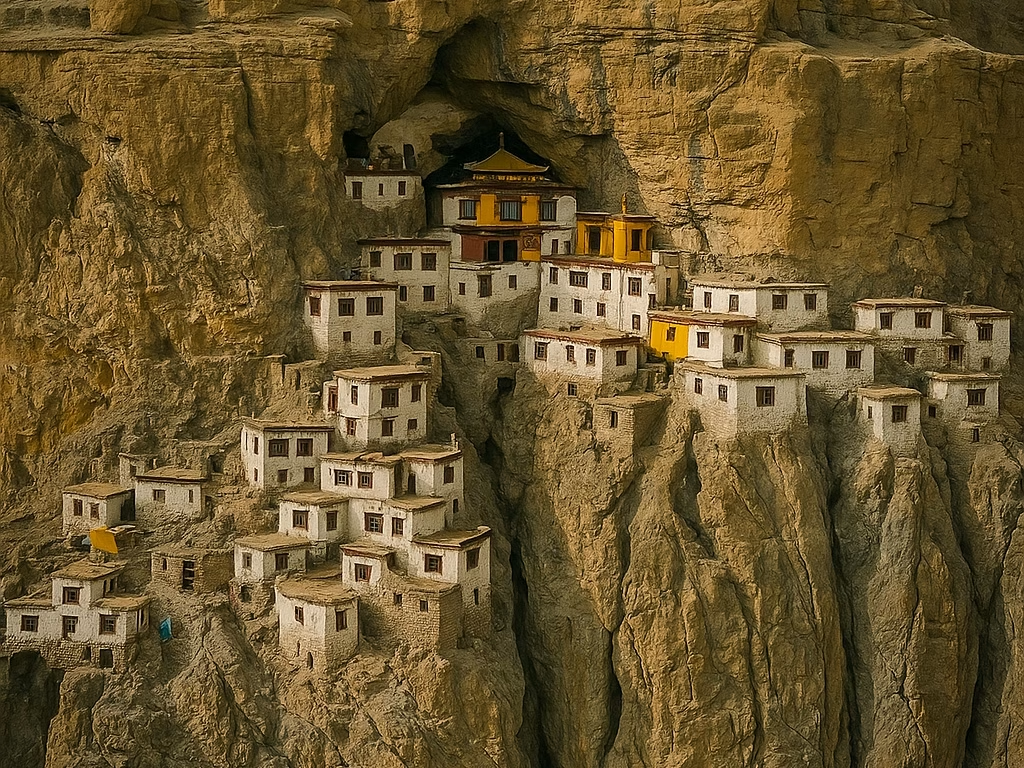
Dist: 12 km | Time: 05-07 hours
Today, after breakfast, you will begin your trek towards Phuktar Monastery. This remote Buddhist Gompa, built along natural caves in the Lungnak Valley and accessible only by trekking, is known for its historic rock-cut facade, stunning vistas, and vibrant festivals. In the evening, you will return to Purney and spend the rest of your night.
Meals: Breakfast and Dinner
Night: Stay at the homestay/camps in Purne
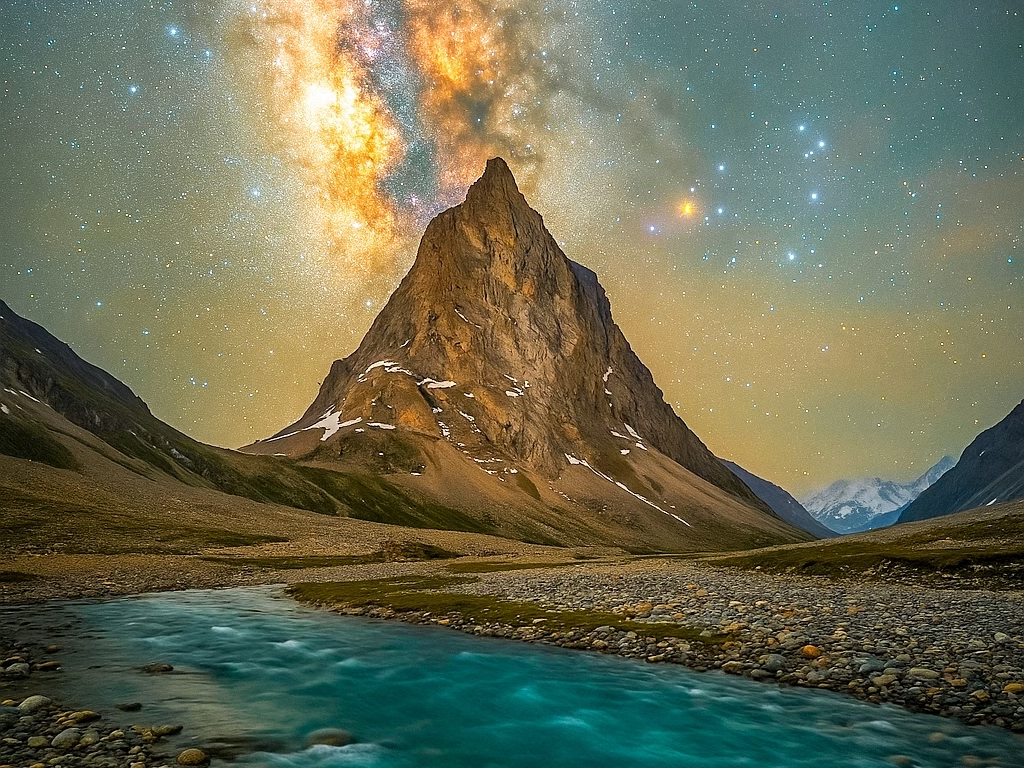
Dist: 50 km | Time: 04-05 hours
After breakfast, you will head towards Padum, visit the historic Karsha Monastery, and then continue to Stongdey Monastery, the largest monastery in the Zanskar Valley. In the evening, you will reach Padum, where you will stay for the night.
Meals: Breakfast and Dinner
Night: Stay at the hotel in Padum
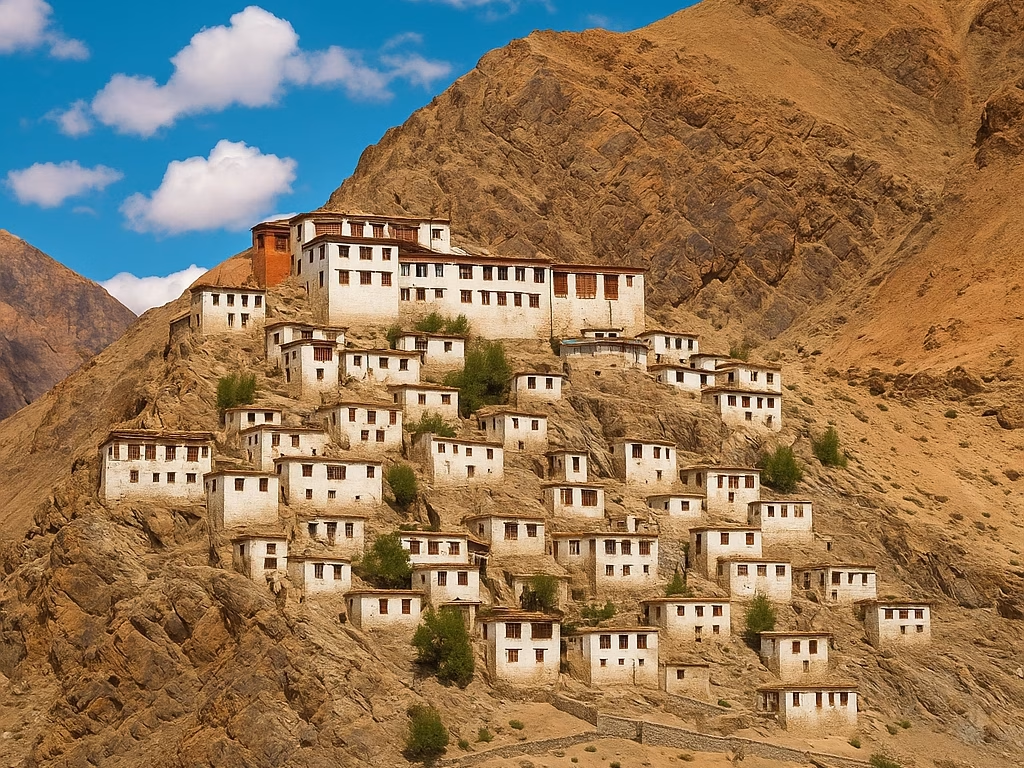
Dist: 334 km | Time: 09-10 hours
You will start your day from Padum to Lamayuru, where a beautiful Monastery stands, waiting for you to witness its beauty. Lamayuru has the most incredible remote mountain passes that will leave you spellbound with spectacular fortified locations.
Meals: Breakfast and Dinner
Night: Stay at the hotel in Lamayuru
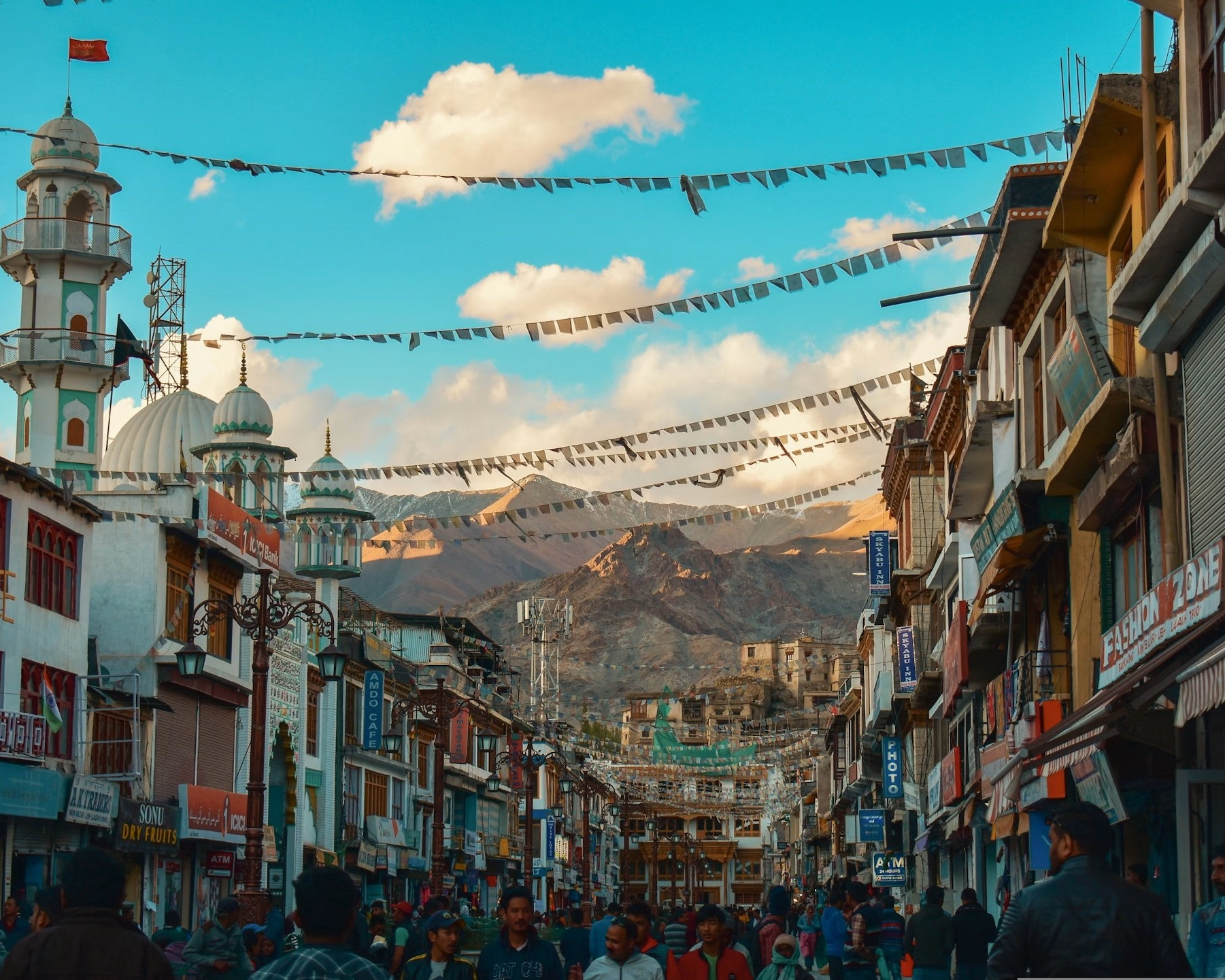
Dist: 115 km | Time: 04-06 hours
After breakfast, you will head towards Leh. Upon arrival, visit Leh Palace and Shanti Stupa, explore the local market, and in the evening, enjoy a beautiful sunset overlooking the Indus Valley.
Meals: Breakfast and Dinner
Night: Stay at the hotel in Leh
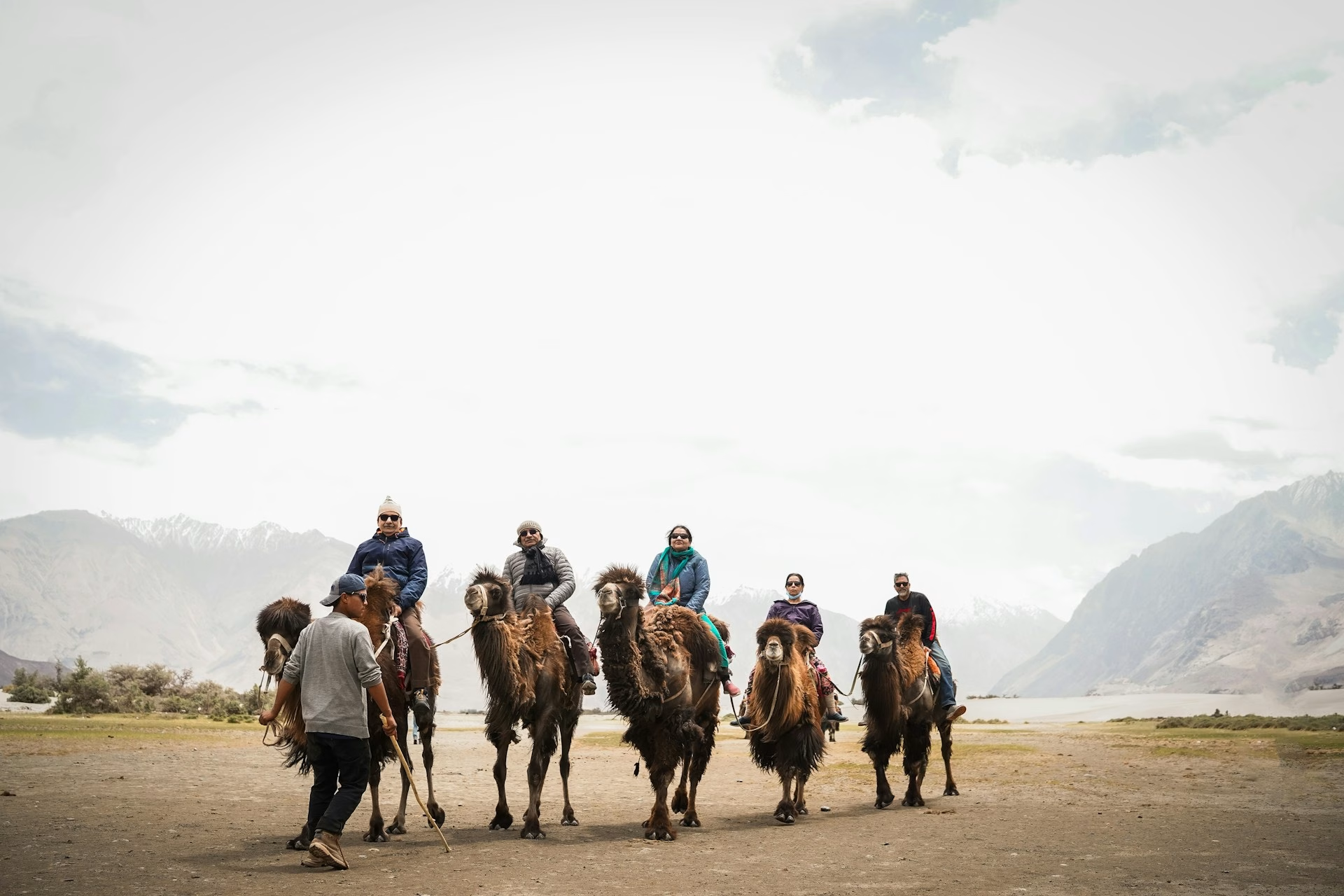
Dist: 180 km | Time: 06-08 hours
Today, you will ride past one of the highest accessible motorable passes in the world - Khardungla La at 18,380 ft. Upon arrival at Nubra, you will visit Diskit Monastery, the oldest and largest Buddhist monastery in Nubra Valley.
Meals: Breakfast and Dinner
Night: Stay at the hotel/camps in Nubra Valley
Dist: 200 km | Time: 06-08 hours
Today, after breakfast, you will drive towards Pangong Tso, a remote, closed-basin lake in the Himalayas that features brackish water, migrating birds & more. After reaching Pangong Tso, you will camp on the banks of the Lake.
Meals: Breakfast and Dinner
Night: Stay at the camps near Pangong Lake
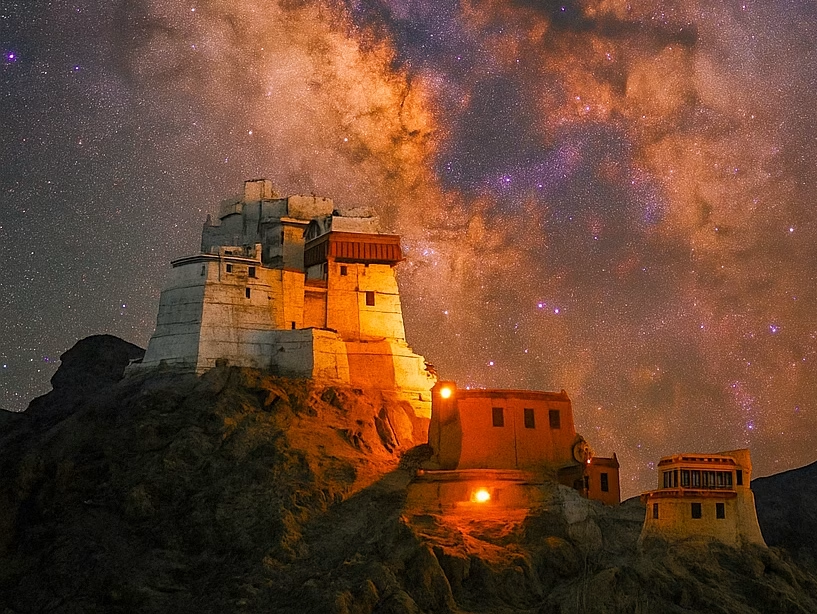
Distance: 331 km | 08-09 hours
After an early breakfast, you will start your journey towards Hanle via Tangtse. After reaching Hanle, you will visit the Indian Astronomical Observatory and the Hanle Monastery.
Meals: Breakfast and Dinner
Night: Stay at the Homestay in Hanle
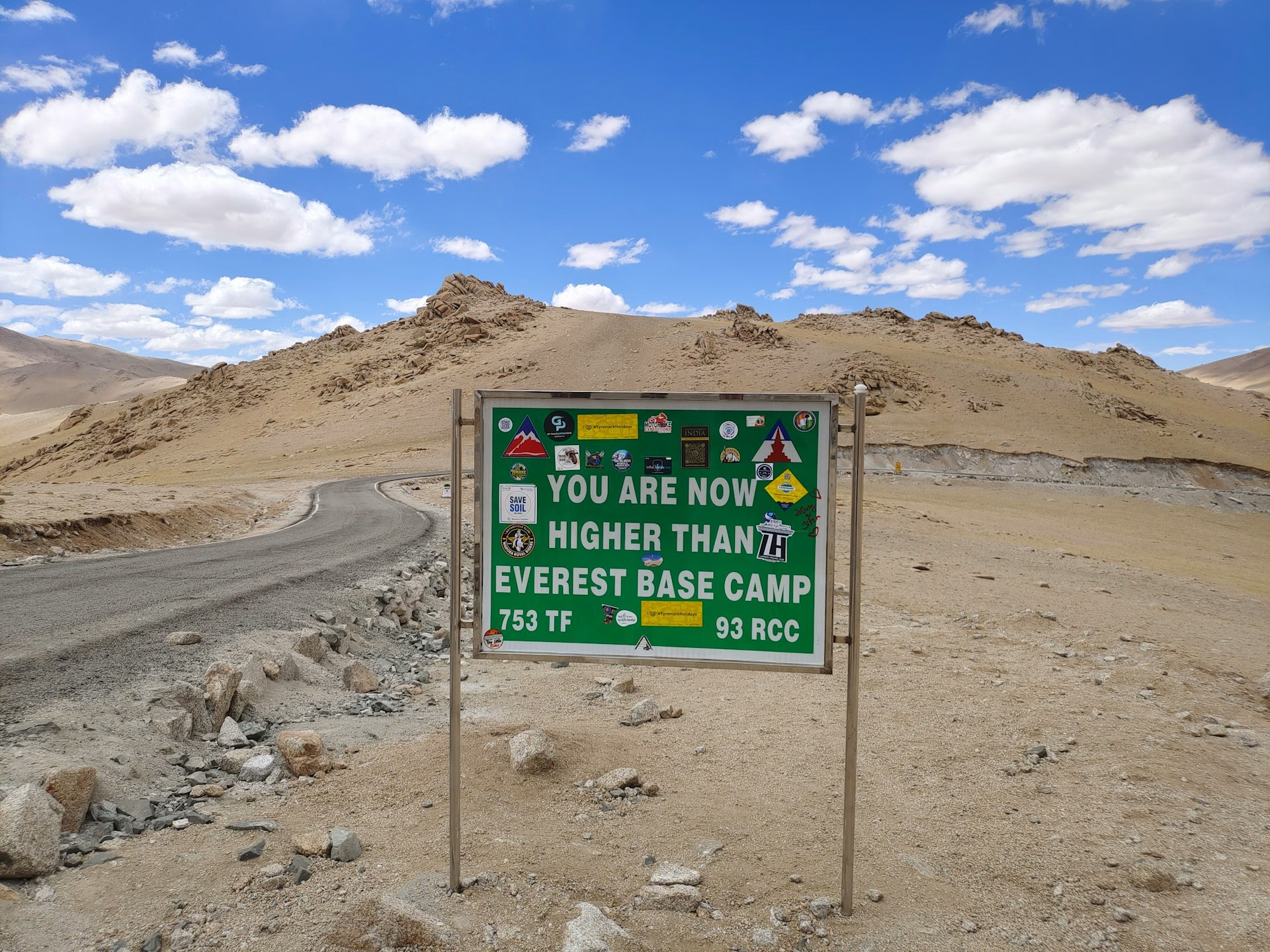
Distance: 180 km | 08-09 hours
After breakfast, you will leave for the world's highest pass, Umling La, in Ladakh on the ridgeline between Koyul Lungpa and the Indus River near Demchok.
Meals: Breakfast and Dinner
Night: Stay at the Homestay in Hanle
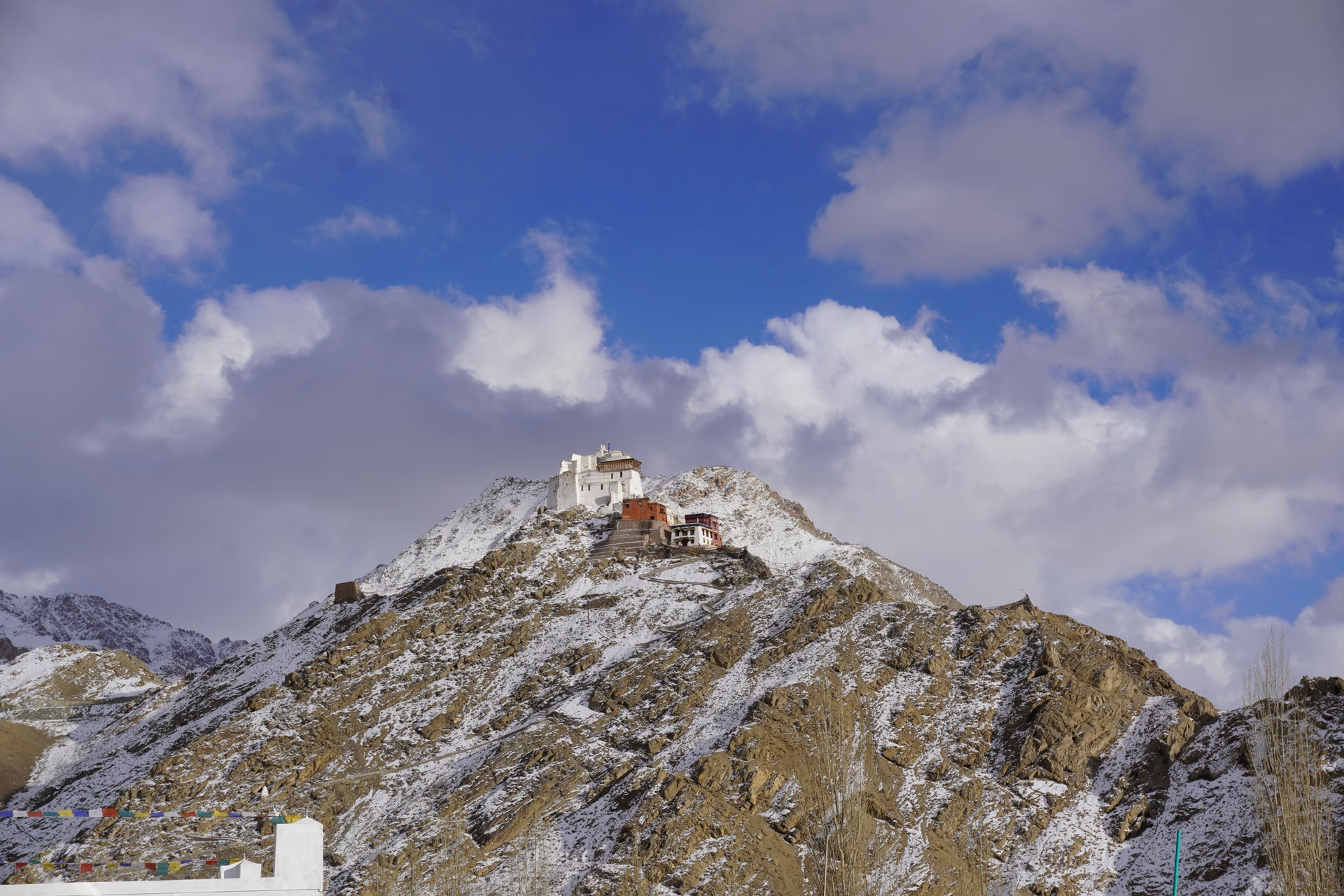
Distance: 254 km | 08-09 hours
After an early breakfast, you will ride back towards Leh. The route from Hanle to Leh traverses Ladakh's stark, scenic beauty, offering breathtaking views of the Himalayas and remote, high-altitude landscapes.
Meals: Breakfast and Dinner
Night: Stay at the Hotel in Leh
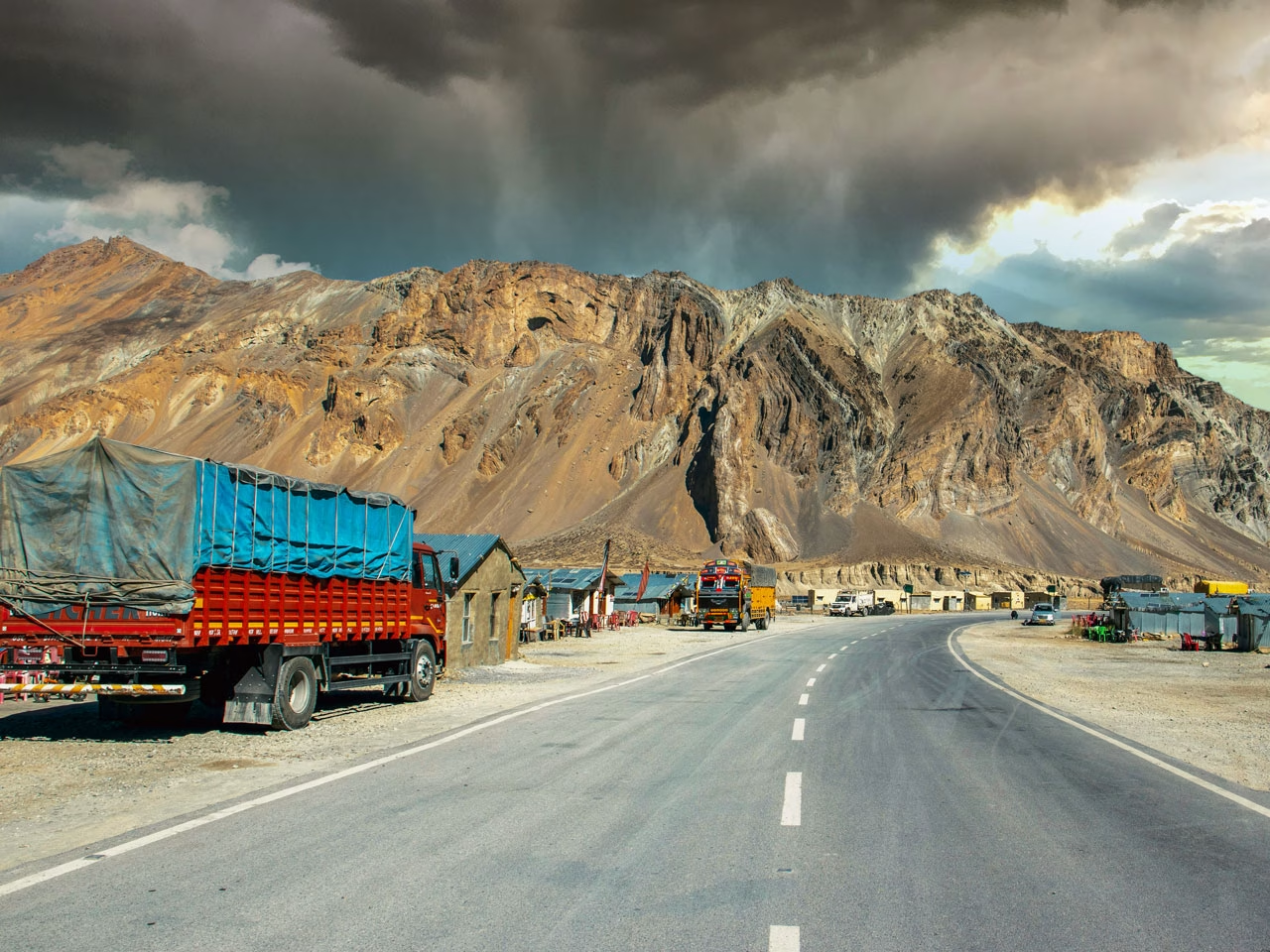
Distance: 286 km | 08-09 hours
Today, you will start from Leh and pass through the quaint village of Gya. It ascends to the breathtaking Tanglang La pass, Lachulung La, descends via the dramatic Nakee La, and navigates the challenging Gata Loops, finally arriving at Sarchu.
Meals: Breakfast and Dinner
Night: Stay at the Hotel in Leh
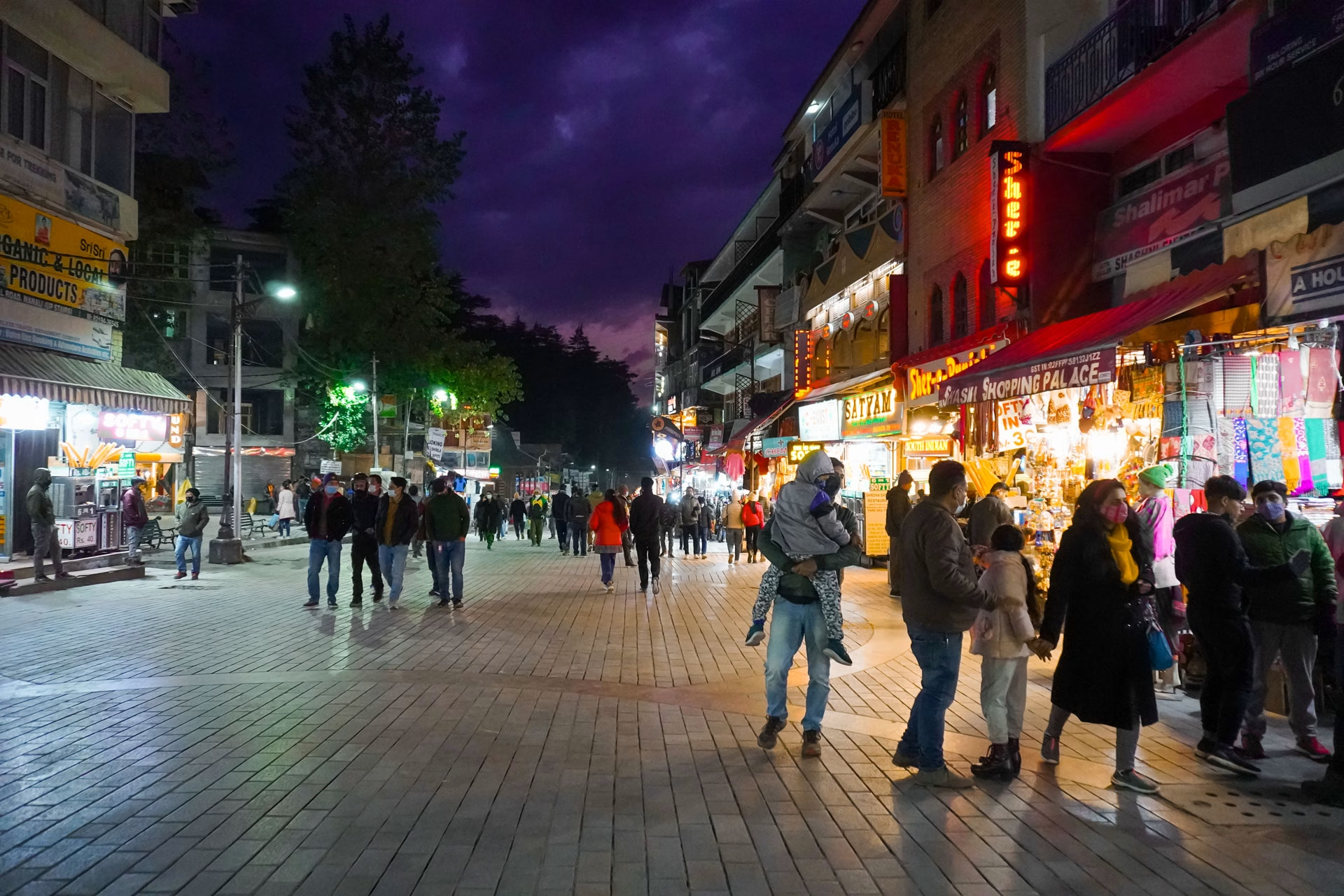
Distance: 177 km | 05-06 hours
After waking up today, you will start your journey towards Manali. You will start from Sarchu and ascend to the Baralacha La pass. You will then descend to the lush Bhaga River valley, passing through the Atal tunnel before finally reaching Manali.
Meals: Breakfast
Night: Overnight Journey by Volvo/Cab
| Location | Places to visit |
| Manali | Mall Road, Old Manali, Club House, Solang Valley, Atal Tunnel |
| Jispa | Sissu, Keylong |
| Purne | Shinkula, Kargaik, Phugtal |
| Padum | Karsha Monastery, Sheela Village waterfall |
| Lamayuru | Lingshed, Singela, Fotoksar, Sirsila, Hanupatta, Wanla, Khaltse |
| Leh | Sangam, Thiksey Monastery, Leh Palace, Shanti Stupa, Leh Market, Namgyal Tsemo, Sankar Gompa, Magnetic Hill |
| Nubra Valley | Diskit Monastery, Sand Dunes, Turtuk, Khardungla Pass |
| Pangong Lake | Shyok Village |
| Hanle | Indian Astronomical Observatory, Hanle Monastery |
| Sarchu | Lachulung La, Nakee La, Gata Loops |
Notes:
| Location | Hotels |
| Jispa | North Ledger camp or Similar |
| Purne | Grand Purne or Similar |
| Padum | Zanskar Eco Lodge or Similar |
| Lamayuru | Welcome Guest House or Similar |
| Leh | Borgo Villa or Similar |
| Nubra | Paramount Camp or Similar |
| Pangong | White Heaven or Similar |
| Hanle | Padma Homestay or Similar |
| Sarchu | North Ledger Camp or Similar |
We understand that plans can change, but the booking amount is non-refundable due to the costs we incur in preparing for your tour or activity. If you wish to reschedule for a different date, we'll adjust it to the same package, providing you with the necessary flexibility.
If you have paid the total amount but cancelled the package. You will be provided with a refund, as mentioned below:
Tours or activities may be cancelled due to unforeseen events beyond our control, such as weather conditions like heavy rain or storms, or government restrictions like sudden closures of specific areas. In such a scenario, we will provide an alternate tour or activity. However, no refunds will be provided.
The Zanskar Leh expedition stands as an epitome of adventure, beckoning thrill-seekers and nature enthusiasts to explore one of the most mesmerizing regions of the Himalayas. This journey not only offers exhilarating road trips but also unveils spectacular landscapes, rich cultural heritage, and serenity that is hard to find elsewhere. Starting from Delhi, the expedition encompasses a circular route that immerses travelers in the enchanting beauty of the Himalayas.
The journey commences from the bustling capital city of Delhi and meanders through a tapestry of breathtaking sites. One of the first remarkable attractions is the Shinkula Pass, which offers panoramic views of the surrounding peaks before descending into the scenic Zanskar Valley. As travelers continue along the rugged roads, they arrive at Phuktar Monastery, a significant spiritual site that clings to cliffs and provides a serene atmosphere for reflection. The village of Padum serves as a gateway to numerous trekking routes, ensuring the adventurous spirit thrives throughout the expedition.
Further along, the route leads to Lamayuru, known for its stunning moon-like landscape and ancient monastery, before progressing to Leh, the capital of Ladakh. Here, visitors can immerse themselves in the rich Tibetan culture and heritage. As the expedition unfolds, it also takes participants to the Nubra Valley, where the confluence of desert ecosystems and snow-capped mountains creates a unique environment. The mesmerizing waters of Pangong Tso come next, known for its dramatically changing hues. Lastly, adventurers will face the challenge of Umling La, acknowledged as the highest motorable pass globally, which adds a thrilling conclusion to this incredible journey.
The total duration of the Zanskar Leh expedition typically ranges from 12 to 15 days, allowing ample time to soak in the sights and experiences along the way. This expedition not only nourishes the soul but also offers a wealth of unforgettable memories, making it an essential adventure for all who dare to embark on it.
Beginning in Delhi, travelers typically first reach Manali. This vibrant hill station serves as an ideal launching point for the expedition, providing essential services and a chance to acclimatize to the changing altitude. From Manali, the journey continues towards Jispa, a small village nestled in the stunning valley of Lahaul, known for its picturesque landscapes and serene environment.
Upon departure from Jispa, the expedition moves towards Purne, where adventurers can catch their first glimpses of ancient monasteries and the stunning Zanskar River. Phuktar, known for its breathtaking cliffside monastery, serves as a highlight on this segment of the trip. Continuing the journey leads explorers to Padum, the administrative hub of Zanskar Valley, which offers rich cultural encounters and opportunities for local interactions.
Next, travelers progress to Lamayuru, famous for its expansive lunar landscapes and ancient monasteries. The journey then heads to Leh, the largest town in the region, where one can relax and explore rich Tibetan culture and heritage. Following Leh, the itinerary includes Nubra Valley, a landscape of sand dunes and clear rivers, perfect for a memorable exploration.
After Nubra, adventurers will make their way to the stunning Pangong Lake, renowned for its changing colors and serene surroundings. The expedition continues through Hanle and Umling La, which boasts one of the highest motorable roads in the world. Finally, the journey culminates at Sarchu before making the return trip to Delhi, ensuring an unforgettable Zanskar Leh expedition filled with breathtaking views and culturally enriching experiences.
The Zanskar Leh expedition begins in Delhi, where the journey sets off with a drive to Manali. This scenic ride takes travelers through lush green landscapes, winding roads, and vibrant villages. As the journey progresses, the altitude increases, and the environment transforms into mesmerizing mountain terrain. The excitement of entering the Himalayas is palpable, and the route provides glimpses of snow-capped peaks that hint at the adventure ahead.
After reaching Manali, the expedition features an essential acclimatization period. Participants must adapt to the high-altitude environment before proceeding further. During this time, adventurers can explore the picturesque town, enjoying its local cuisine and culture, while gearing up for the next phase of the Zanskar Leh expedition.
On the third day, the journey continues from Manali to Purne, a remote village nestled in the Zanskar Valley. Travelers begin with an exhilarating drive that includes crossing the Shinkula Pass, one of the highest motorable passes in the region. The breathtaking views that unfold during this segment are awe-inspiring, with sweeping vistas of rugged mountains and deep valleys. The adventure through this unspoiled landscape is both thrilling and enlightening, instilling a sense of connection with nature.
As the expedition reaches Purne, participants have the opportunity to interact with the locals, who are known for their warm hospitality. The village is steeped in rich culture and tradition, making it a unique experience. Conversations with the residents not only provide insights into their way of life but also enrich the overall adventure, offering a glimpse into the enchanting world of Zanskar. The first three days of the Zanskar Leh expedition set a solid foundation for the enriching experiences that lie ahead.
The Zanskar Leh expedition continues to reveal its astounding beauty as we venture into Padum and Lamayuru. Nestled amidst towering mountains, Padum serves as the administrative center and heart of the Zanskar Valley. The journey to this tranquil town is enchanting, characterized by sprawling landscapes, rugged terrain, and the awe-inspiring Zanskar River. This leg of the expedition not only showcases the natural scenery but also immerses travelers in the rich cultural fabric of the region.
A focal point of this phase is the Phuktar Monastery, a breathtaking site carved into a limestone cliff. This monastery holds significant spiritual importance, being a center of Tibetan Buddhism. Visitors often partake in meditation and observe monks in their daily routines, offering an intimate glimpse into their serene lifestyle. The surrounding environment enhances the experience, as the crisp air infused with the fragrance of juniper fills the senses, creating a peaceful atmosphere that leaves a lasting impression.
Beyond its spiritual essence, Padum also introduces travelers to the unique culinary delights of the region. Traditional dishes such as momos and thukpa are not only filling but also highlight local ingredients and spices. Dining in local establishments fosters connections with the community, encouraging exchanges with friendly locals who share stories of their nomadic lifestyle and the significance of preserving cultural heritage in a rapidly changing world. These interactions deepen one’s appreciation for the enduring traditions still alive in the Himalayas.
As the expedition progresses to Lamayuru, often referred to as the ‘Moonland’ due to its surreal landscape, the contrasts between lush greenery and barren mountains are striking. This extraordinary region offers rich historical artifacts and beautiful gompas, further enriching the experience. The harmony of nature and culture encountered in these days enhances the overall Zanskar Leh expedition, crafting memories that harmonize adventure and serenity.
As the Zanskar Leh expedition progressed into days seven and eight, the allure of Leh and Nubra Valley beckoned with its rich tapestry of culture, history, and breathtaking scenery. Leh, a former royal capital, serves as the cultural heart of the region, offering a vibrant atmosphere filled with bustling markets, quaint cafes, and a myriad of ancient monasteries. Among the must-visit places are the iconic Shanti Stupa and the venerable Hemis Monastery, each a standing testament to the region’s Buddhist heritage.
One of the defining moments of the journey was the thrilling crossing of Khardung La, the second-highest motorable pass in the world. This remarkable achievement rewarded travelers with panoramic views of the jagged peaks and rugged landscape, exuding an exhilarating sense of adventure. As the expedition approached Nubra Valley, the terrain began to shift dramatically. The stunning juxtaposition of barren mountains and lush valleys revealed a world untouched by time, where the smooth-flowing rivers harmonize with the starkness of the surrounding mountains.
Nubra Valley, renowned for its serene landscapes and unique sand dunes, provided an opportunity for travelers to engage in activities such as camel rides on the Bactrian camels. Strolling through the valley, visitors often find themselves enveloped in a tranquil atmosphere, perfect for reflection. During our stay, interactions with fellow adventurers and locals offered a glimpse into the rich cultural tapestry of Ladakh. The warmth and hospitality of the region’s inhabitants left a lasting impression, as conversations flowed over shared experiences of trekking, biking, and the challenges of high-altitude travel.
To sum it up, the days spent exploring Leh and Nubra Valley during the zanskar leh expedition were not merely about the sights, but about the connections forged and the memories created amidst the majestic Himalayas.
The Zanskar Leh expedition continues with the breathtaking experiences at Pangong Tso, a high-altitude lake renowned for its stunning azure waters that shift hues throughout the day. The journey to Pangong Tso reveals the grandeur of the surrounding landscapes, characterized by towering mountains and vast open spaces. As one approaches the lake, it is common to behold the reflection of these majestic peaks mirrored in the water, providing a stunning backdrop for photography and personal reflection.
Camping by the shores of Pangong Tso constitutes a highlight of this segment of the journey. Visitors often find serenity in this environment as night falls, with stars twinkling overhead in the clear, unpolluted sky. The peaceful ambiance allows for moments of contemplation or convivial gatherings around campfires, where stories and experiences from the expedition can be shared among fellow travelers. The shifting colors of the lake, from deep blue to vibrant turquoise, provide a mesmerizing spectacle, reinforcing the unique beauty that defines one of the world’s highest lakes.
Following the enchanting experiences at Pangong Tso, the expedition moves on to Hanle, a lesser-known gem that offers an extraordinary combination of nature and science. The Hanle region is home to an astronomical observatory, one of the highest in the world, allowing visitors to engage with the cosmos like never before. The opportunity to witness celestial bodies through powerful telescopes is unparalleled, especially in such a serene location. Clear mountain skies are ideal for stargazing, making Hanle a haven for astronomy enthusiasts.
This part of the Zanskar Leh expedition encapsulates not only the visual splendor of the lakes but also the tranquility of the Himalayan wilderness, providing an escape from the hustle and bustle of everyday life. The captivating beauty of Pangong Tso and Hanle serves as a reminder of the pristine nature that still exists in our world, inviting travelers to cherish and protect these unique landscapes.
The culmination of the Zanskar Leh expedition takes adventurers to Umling La, celebrated as the highest motorable pass globally, boasting an impressive elevation of 19,300 feet. Reaching this lofty destination is a feat characterized by exhilarating highs and challenging terrains, testing the limits of both mental and physical endurance. The journey to Umling La is marked by precarious mountain roads, where harsh weather conditions and rugged landscapes prevail, creating an environment that is as breathtaking as it is formidable.
As you navigate this high-altitude route, one cannot help but be captivated by the stunning panoramas stretching across the horizon. Vast expanses of untouched snow juxtaposed with stark mountain ridges create a dramatic backdrop that transforms every turn into an unforgettable photograph. The thrill of conquering Umling La is complemented by the sense of achievement felt by the travelers, as this landmark represents not just geographical elevation but also a metaphorical ascent into the heart of adventure.
After experiencing the majesty of Umling La, the expedition continues towards Sarchu, nestled within the remarkable landscapes of the Zanskar Range. Sarchu serves as a rejuvenating break for trekkers and provides an excellent camping ground. Its unique climate and geographical features contribute to a rare experience; the dramatic contrast between rolling hills and deep valleys offer a serene atmosphere for reflection and camaraderie among fellow travelers. The camping conditions, albeit basic, foster a sense of unity and shared experience, enabling the bond of the expedition team to deepen under a canopy of stars.
As you wrap up this segment of the Zanskar Leh expedition, the collective experience of traversing these iconic landscapes solidifies not only the memories of conquering high altitudes but also the personal connections forged along the way.
The return journey from Leh to Delhi through Manali is imbued with a sense of nostalgia and reflection following the exhilarating Zanskar Leh expedition. As travelers wind their way back, the majestic landscapes serve as a poignant reminder of the adventure and camaraderie forged in the heart of the Himalayas. Each twist and turn of the road reveals stunning views that have become etched in memory—verdant valleys contrasted against the backdrop of towering snow-capped peaks, and the shimmering rivers that cut through the rugged terrain.
Day 13 marks the beginning of the return leg, where the journey through the mountainous regions is punctuated by numerous roadside attractions. The enchanting beauty of the region makes every stop an opportunity to capture the essence of the journey. Travelers often find themselves drawn to local eateries that serve authentic Himachali cuisine, offering a taste of the rich culinary traditions of the region. These moments provide a chance to engage with local culture while savoring the flavors that tell the story of the land.
The emotional connection formed with fellow expedition members also enriches the experience. The shared stories, laughter, and challenges encountered along the way create a bond that transcends the journey itself. As the group retraces their steps, they reflect on the breathtaking landscapes witnessed during the Zanskar Leh expedition, reminding each other of the striking sunsets over the mountains and the tranquility of the alpine lakes. These shared memories deepen the appreciation for the adventure, fostering a camaraderie that resonates long after the journey concludes.
As travelers continue their way back to Delhi, the landscapes witnessed during the expedition become imprinted on their hearts. In conclusion, the return journey via Manali serves as a heartfelt closure to an unforgettable adventure, leaving an indelible mark on all who dared to explore the mesmerizing terrains of the Zanskar region.
The Zanskar Leh expedition offers an unparalleled opportunity to engage with the rich cultural heritage of the region, characterized by its stunning monasteries, vibrant festivals, and warm connections with local villagers. Among the key attractions, visitors can explore ancient monasteries such as the Phugtal Monastery, perched precariously on a cliff, and the venerable Hemis Monastery, known for its colorful annual festival. These significant sites not only showcase remarkable architecture but also serve as vital centers of Buddhism, reflecting the spiritual essence of Zanskar.
During the expedition, engaging with local cultural festivals is another highlight that adds depth to the journey. Events such as the Hemis Festival, renowned for its traditional dances and vibrant celebrations, draw attendees from across the region and provide a glimpse into the unique customs and community spirit of the Zanskar people. Participating in these festivities allows travelers to understand the historical context and religious significance behind these celebrations, enriching their overall experience.
Moreover, visiting the local villages along the zanskar leh expedition route provides an invaluable opportunity to interact with the inhabitants, who are often eager to share stories of their daily lives and cultural practices. These exchanges foster a deeper appreciation of the local traditions, as visitors learn of the resilience and adaptability of the villagers amidst the harsh Himalayan landscape. This direct engagement with the local population serves to illustrate the intricate relationship between the people, their environment, and their historical evolution, enhancing comprehension of the region’s culture and its significance as an integral part of the larger Tibetan Buddhist legacy.
In conclusion, immersing oneself in the cultural and historical dimensions of the Zanskar region contributes to a more profound experience during the Zanskar Leh expedition. The unique activities, encounters, and reflections along the way allow for a fulfilling exploration of this remarkable part of the Himalayas.
Embarking on a Zanskar Leh expedition requires thoughtful preparation to ensure a memorable and safe adventure. The best time to visit this spectacular region is during the summer months, from June to September. During this period, the weather is relatively mild, and the road conditions are optimal, making it ideal for trekking and exploring. However, travelers should keep in mind that temperatures can vary greatly, so dressing in layers is advisable.
Before commencing your journey, it is essential to acquire the necessary permits. To venture into specific areas of Zanskar and Leh, foreign travelers must obtain an Inner Line Permit (ILP), which can be arranged through local travel agencies or upon arrival in Leh. Additionally, if you’re planning to trek in restricted zones, special permission may be required from the government.
A well-planned packing list is critical for the Zanskar Leh expedition. Essential items include warm clothing, sturdy trekking shoes, a backpack, a first-aid kit, sun protection (sunscreen and sunglasses), a reusable water bottle, and energy snacks. Portable chargers for electronic devices, as well as a durable camera to capture the stunning landscapes, are highly recommended.
Health and safety should be prioritized throughout your expedition. Acclimatization is vital to prevent altitude sickness; therefore, travelers should plan to spend a few days in Leh before embarking on treks. Staying hydrated and eating light meals can help mitigate health issues. It’s also advisable to consult a healthcare professional about altitude sickness medications before departure.
For those seeking reliable guidance during their journey, consider engaging a reputable tour operator who specializes in the Zanskar region. Researching online reviews and seeking recommendations from fellow travelers can lead you to experienced guides who will enhance your expedition experience while ensuring safety and enjoyment.
Leave a review